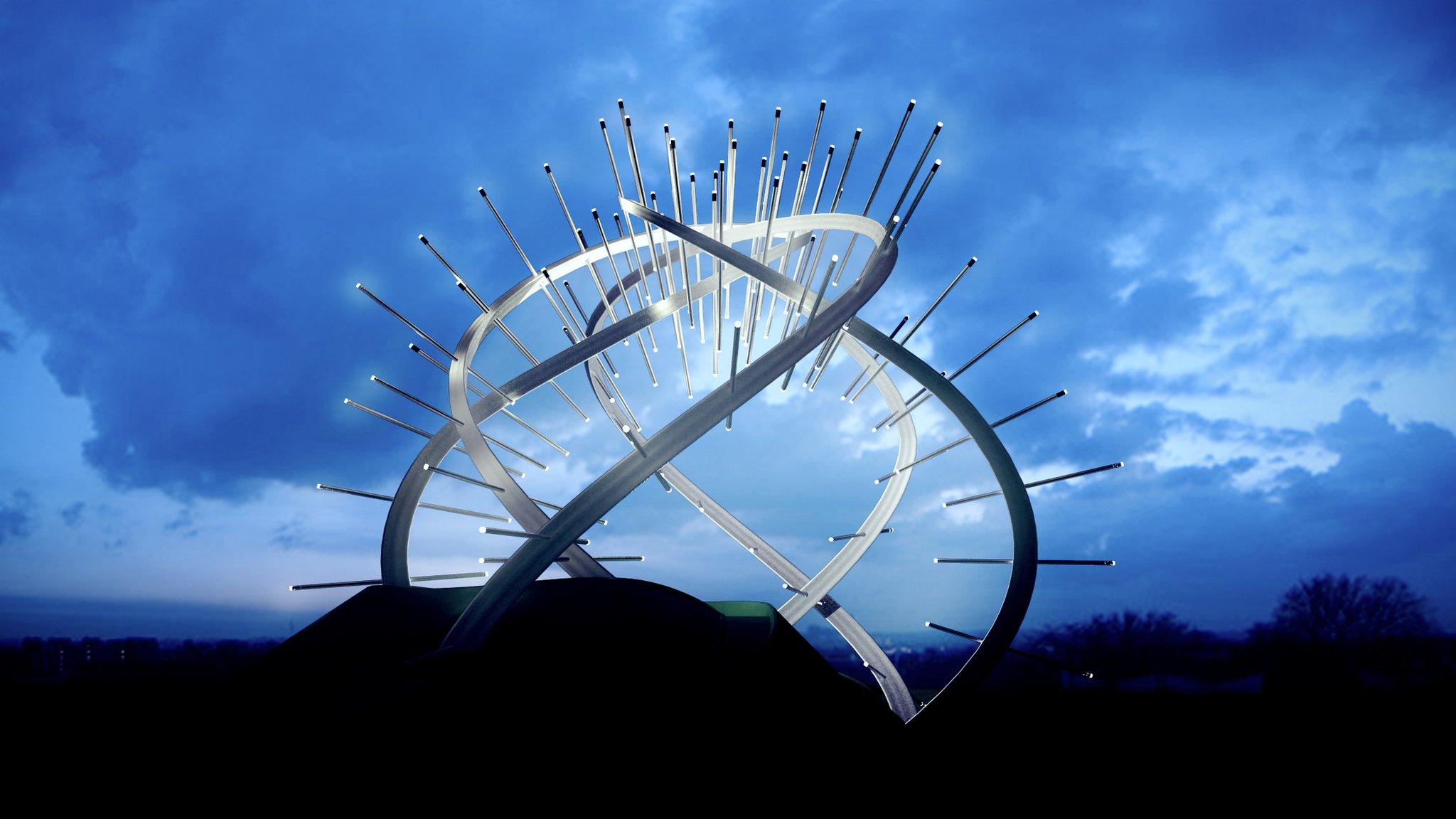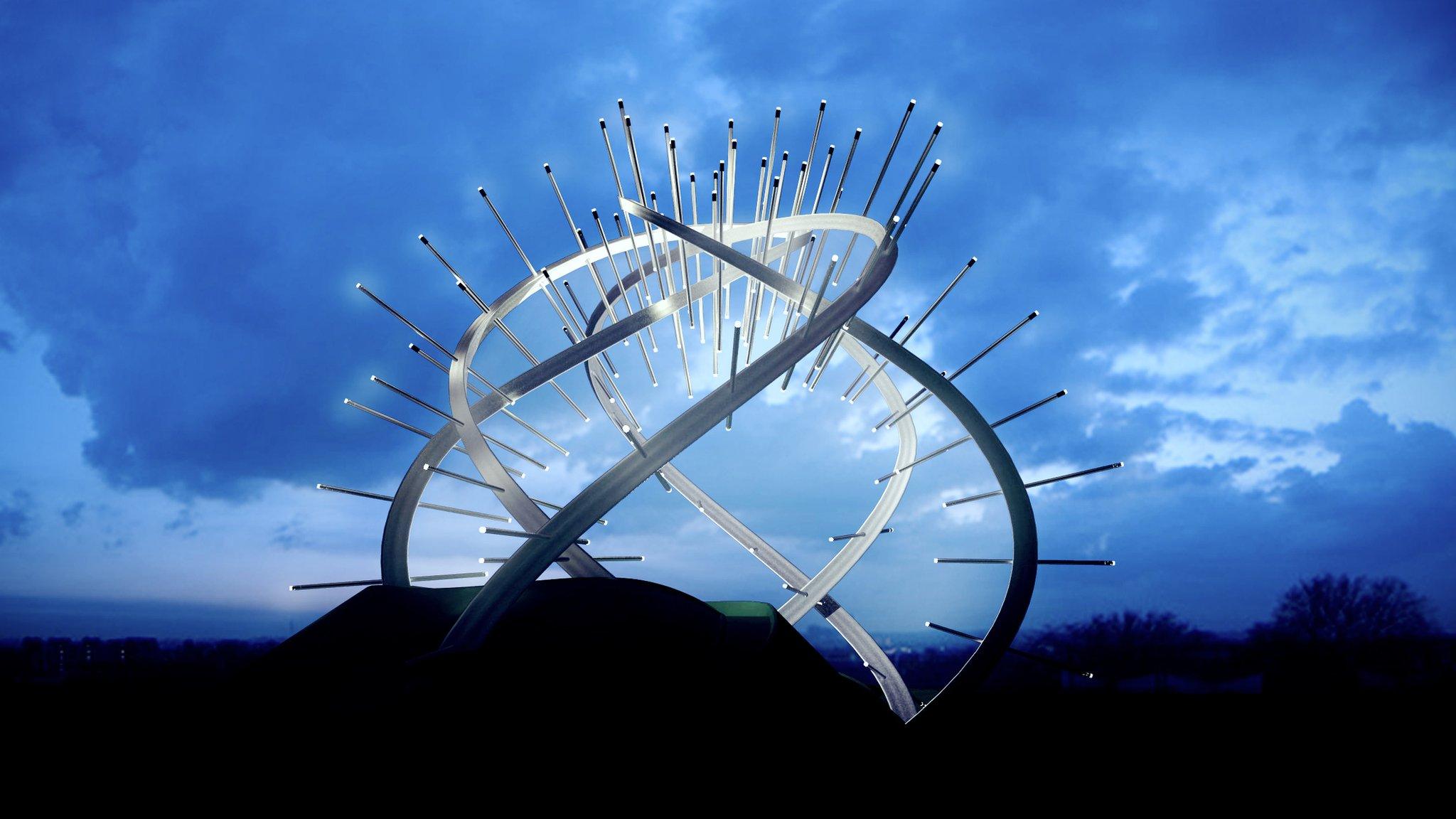Star of Caledonia Scotland-England landmark set to be smaller than planned
- Published

A bid to reduce the planned size of the Star of Caledonia has been lodged
The size of a landmark sculpture designed to be built on the England-Scotland border could be smaller than planned under new proposals.
The move would see the £7m Star of Caledonia reduced to about 80% of its original intended proportions.
At 40m (130ft) the sculpture would have been twice as high as the Angel of the North at Gateshead.
The scaled back design follows a change in disability access laws since the initial design was unveiled.
It is hoped the project will attract 100,000 visitors a year to the area, generating £4m for the economy.
The spiral structure, which would sit at the start of the M74 near Gretna Green, is yet to be built.
It was first suggested as a way of helping the area to recover following the foot-and-mouth outbreak of 2001.
The idea was to emulate the success enjoyed by the Angel of the North and a competition was launched to decide how it should look.

The landmark would be clearly visible from the motorway across the Scotland-England border
In 2011, a giant star - a collaboration between the late Charles Jencks and Cecil Balmond - was selected as the winning design for the scheme.
However, with little funding in place it looked unlikely to go ahead when it missed out on Creative Scotland support three years later.
Visitor expectations
Planning permission was extended to keep its hopes alive and fresh financial support was eventually secured.
Backing from South of Scotland Enterprise was announced last year which breathed new life into the scheme.
It should help to unlock a funding package from renewable energy firm Community Windpower and the Borderlands Growth Deal to finally allow the project to go ahead.
A bid for a non-material variation in its planning consent has been lodged for the scheme.
It is now being proposed to reduce it in size by 20% which it is said can be achieved while still meeting the "artistic aesthetic and visitor experience expectations".
The Gretna Landmark Trust also wants to construct a gravel pathway to the structure in order to ensure the project meets disabled access legislation.
An application for a variation of planning permission said it would still provide a welcome to Scotland for drivers and rail users.
Related topics
- Published25 May 2021

- Published10 November 2020

- Published31 May 2019

- Published23 May 2019
